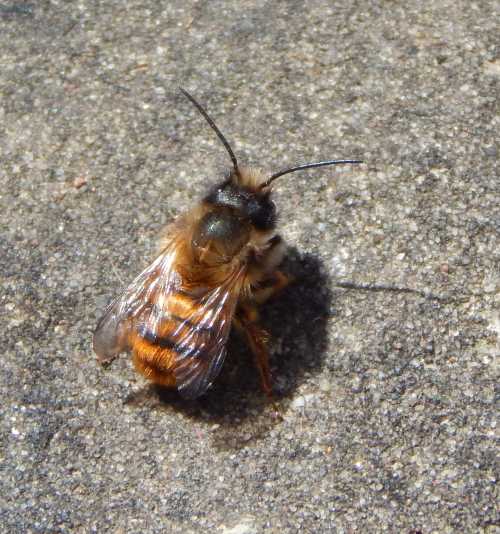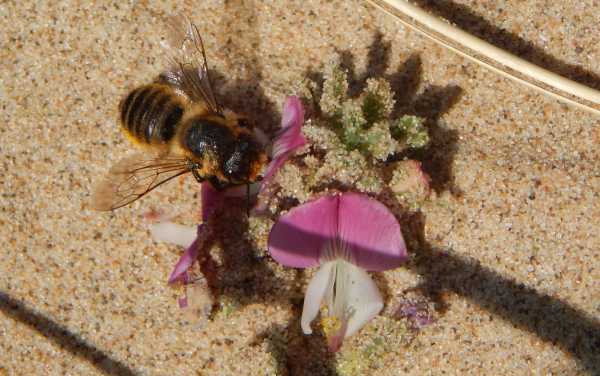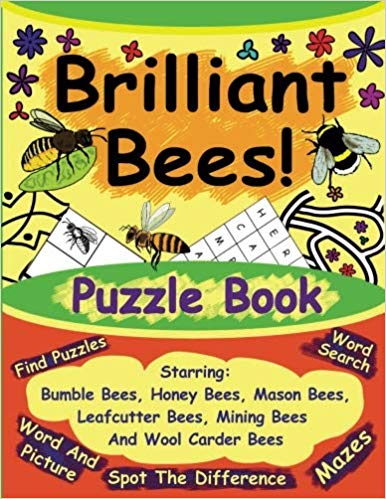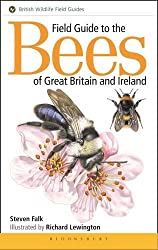Solitary Bees by Ted Benton -
A Book Review
I should firstly say that I already had Ted Benton’s excellent book, 'Bumblebees' before I acquired 'Solitary Bees' by the same author. At the time I purchased
this detailed hardback about bumble bees (comprising around 600 pages), it was officially out of print, and very difficult to get hold of, and so
the copy I bought was second hand.
I was thus delighted when Ted Benton wrote a
book about solitary bees.
As soon as I read the introduction, I knew it would be an informative factual guide, yet written in Benton’s warm accessible style - despite his obvious authority in his subject.
Here's an example:
“Rather later in the year, tidy-minded gardeners might be disappointed to see neatly cut round or ovoid holes in the leaves of their prize roses.
This is the work of the appropriately named leaf-cutter bees (Megachile species). However, this disappointment is a very small price to pay for the pleasure of sharing one’s garden with these fascinating insects.
It is a rare treat to watch the female cutting out the shape she needs, and flying off with it to line a brood cell.
Soon she will
return to the flower-bed to collect pollen among rows of stiff hair on the
underside of her abdomen.” - from the Introduction.
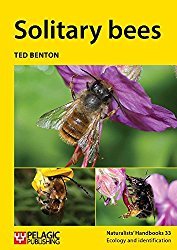
What the book contains
Within the introduction, Benton helps us accurately answer the question “What is a bee?”.
There follows a number of tips, for example, to help the
reader to discern the difference between a fly and a bee and a wasp and a bee,
purely from observation.
For the more serious ecologist/entomologist/biologist, Benton supports the information with the requisite anatomical detail and terminology, along with labelled diagrams. A key to the genera of bees (with glossary) is provided at the back of the book.
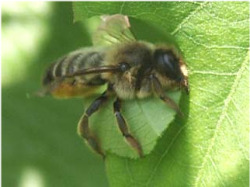
Later in the book there is further description of the the classifications and bee genera, their behaviour and habitats, specific characteristics (such as features seen on legs, facial markings etc), accompanied by a good section of colour photographs.
A chapter, with photographs, outlines parasites and natural enemies of solitary bees, their target hosts and mode of attack, and also a further section on cuckoo species.
Throughout the book, extra notes and diagrams are supplied within the margin, so as to aid understanding, whilst not detracting from the main body of the copy.
Of course, no book about bees would be complete unless it explored their various foraging preferences, including the differing methods of collecting and carrying pollen (and other flower and plant secretions), as well as the interactions between bees and the different flower shapes.
A chapter on the conservation of solitary bees, provides important information about the challenges, habitat requirements etc.
This is a nice addition to my library. Benton’s book is described as a ‘Naturalists Handbook – Ecology and Identification’.
As such, it will be of great assistance and interest to those studying ecology and natural history, as well as those with a passionate amateur interest in observing and learning more about these wonderful - and often overlooked pollinators. Solitary Bees (Naturalists Handbooks) is available from Amazon UK,
and Amazon.com.
BuzzAboutBees.net is a member of the Amazon Associates Program.
As an Amazon Associate I earn from qualifying purchases if you click on a link from my website to an Amazon website page. I only recommend books and goods I myself like. Further information, see: Advertising And Affiliates Disclosure.
Meadowland
by
John Lewis-Stempel
A review of this beautiful nature diary
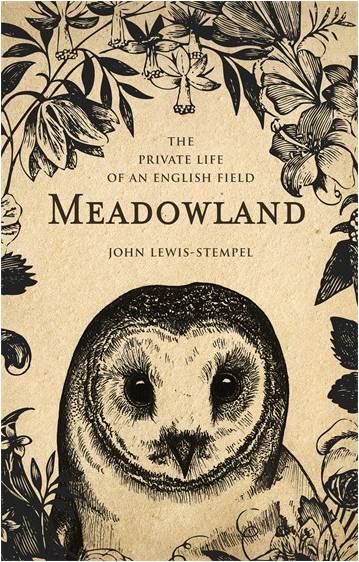
If you found this page helpful or interesting, I'd really be grateful if you would share it with others - if not this page, perhaps another, such as Gardening For Bees.
Thank you so much :) .
